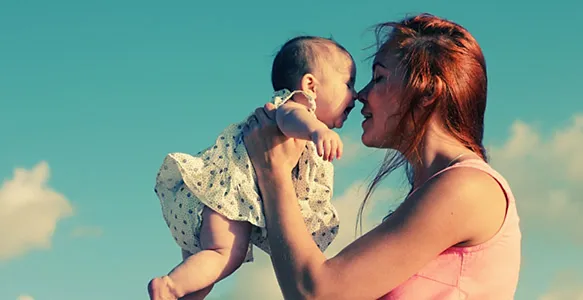Want to share your parenting queries and get answers
Get Solutions and advice from other parents and experts
Ask a QuestionFather of a 1 yr 5 m old boy1 Year ago
Q.
#asktheexpert how track child growth by his activities
Answer
Follow
Report Abuse
Share
1 Answer
 POOJA KOTHARIMom of a 8 yr 9 m old boy1 Year ago
POOJA KOTHARIMom of a 8 yr 9 m old boy1 Year agoA. Tracking your child's growth through their activities is a helpful way to monitor their physical, cognitive, emotional, and social development. Here's how you can track various aspects of growth based on age-appropriate activities: 1. Physical Development Gross motor skills: Monitor milestones like rolling over, sitting, crawling, walking, running, and jumping. For example, a baby typically starts crawling around 6-10 months and walking by 12-18 months. Fine motor skills: Look at how well they can grasp objects, use their hands, and manipulate small items (such as holding a spoon, stacking blocks, or scribbling). Activity to observe: Track your child’s ability to play with toys, use utensils, and handle objects. 2. Cognitive Development Problem-solving skills: See how your child interacts with puzzles, learns cause and effect, and solves simple challenges (like opening a container or figuring out how toys work). Memory: Notice how they remember people, places, or the location of their favorite toys. Attention span: Track how long they can stay engaged in an activity, such as reading a book or playing a game. Activity to observe: Engage them in activities that require problem-solving like shape-sorting toys or simple puzzles. 3. Language Development Babbling and speaking: Monitor your baby’s sounds, words, and sentences as they grow. By 12 months, most children say a few words, and by 2 years, they may form simple sentences. Understanding instructions: See how well they can follow simple commands like “pick up the ball” or “come here.” Activity to observe: Pay attention to how they respond to conversations, read books together, and encourage them to name objects or animals. 4. Social and Emotional Development Interaction with others: Watch how they play with other children or adults, share toys, or show empathy (like comforting others). Independence: Observe their ability to do things independently, like dressing themselves or feeding themselves. Emotional regulation: Track how they express feelings like frustration, joy, or fear, and how they cope with these emotions. Activity to observe: Look at how they react during group play or when they encounter new situations or people. 5. Communication and Listening Skills Listening and responding: Track how well they listen to instructions, engage in conversations, or answer questions. Social play: Notice how they take turns in games and communicate with peers. Activity to observe: Playing interactive games or role-playing can show how well they communicate and understand social cues. 6. Creativity and Imagination Creative play: Watch how they engage in imaginative play with toys, dolls, or pretend scenarios. This often starts around 2 years old. Drawing and art: Look at how their artwork evolves from scribbles to recognizable shapes and scenes. Activity to observe: Provide open-ended toys (like blocks or dolls) and see how they create stories or scenarios. 7. Emotional Milestones Emotional recognition: Track how well your child can recognize and name their own feelings and those of others. Coping with emotions: Notice how they handle disappointment, excitement, or changes in routine. Activity to observe: During storytelling or role play, observe how they express emotions and react to different situations. Tools to Help Track Growth: Growth charts: Use physical growth charts to track height and weight. Milestone checklists: Refer to developmental milestone checklists provided by pediatricians or reliable websites like the CDC. Parenting apps: There are several apps available that allow you to input milestones and activities for easy tracking. Regularly engaging in these observations will give you a good sense of your child's growth and development over time. If you ever have concerns about delays or unusual behavior, discussing them with your pediatrician is always a good idea.
Report Abuse
ADVERTISEMENT
ADVERTISEMENT
SIMILAR QUESTIONS
Father of a 3 yr 8 m old boy
Answer
Follow
Report Abuse
Share
Guardian of a 4 m old boy
Answer
Follow
Report Abuse
Share
Father of a 6 m old girl
Answer
Follow
Report Abuse
Share
Guardian of a 3 yr 11 m old boy
Answer
Follow
Report Abuse
Share
ADVERTISEMENT
ADVERTISEMENT
Mom of a 3 yr 2 m old boy
Answer
Follow
Report Abuse
Share
Guardian of a 1 m old boy
Answer
Follow
Report Abuse
Share
Guardian of a 3 m old boy
Answer
Follow
Report Abuse
Share
Father of a 9 m old girl
Answer
Follow
Report Abuse
Share
ADVERTISEMENT
ADVERTISEMENT
Mom of a 3 m old girl
Q. #asktheexpert how to track baby growth and my baby she vomits a lot of milk daily after feeding
Read More
Answer
Follow
Report Abuse
Share
Guardian of a 9 m old boy
Answer
Follow
Report Abuse
Share
SUGGESTED ARTICLES
Do you know any solution to this question?Let’s go to the app - To help out fellow parents & to get answers to your questions
Add An Answer
Add An Answer
Add An Answer
Ask a Question
This question is being asked for:
Your identity will not be revealed
POST





.svg)
.svg)
.png)

Post Answer